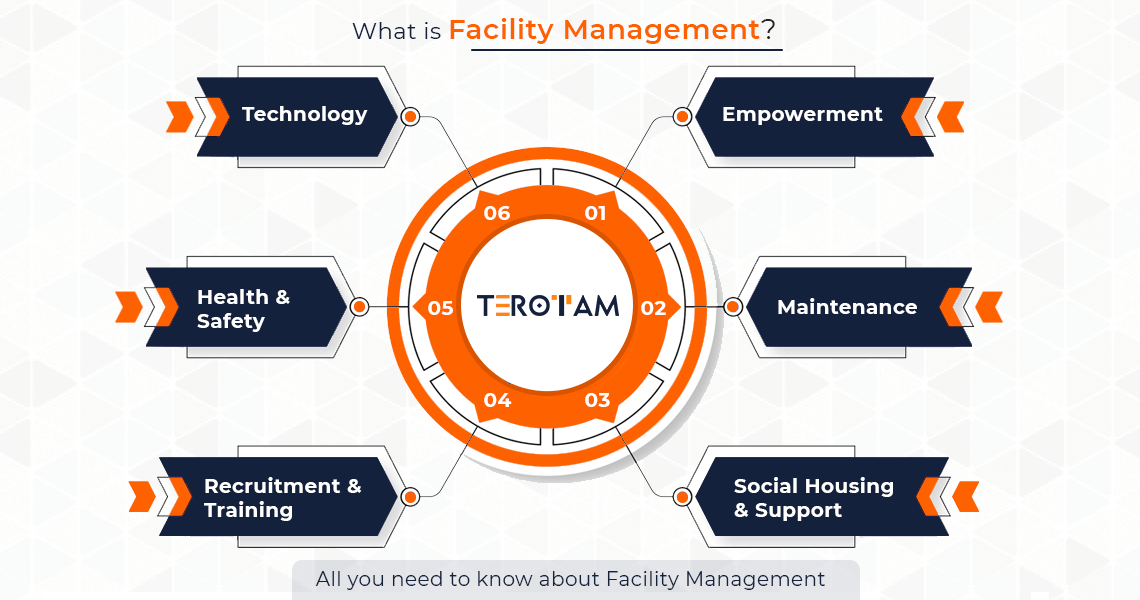Optimize Effectiveness and Safety: Best Practices in Facility Management
In today's quickly progressing landscape, optimizing efficiency and safety and security in facility administration has become a critical focus for organizations making every effort to improve functional efficiency. By integrating clever innovation, prioritizing maintenance protocols, and fostering a culture of safety, center supervisors can dramatically boost both efficiency and compliance.
Embrace Smart Modern Technology
In today's quickly progressing landscape of facility administration, the integration of clever modern technology has become a critical element of functional effectiveness and sustainability. Embracing sophisticated modern technologies such as the Web of Things (IoT), expert system (AI), and data analytics can dramatically boost center monitoring techniques. These technologies help with real-time tracking and control of building systems, enabling managers to optimize power usage, reduce operational expenses, and enhance general safety and security.
Executing smart sensing units and automation systems enables for precise tracking of environmental conditions, occupancy degrees, and tools performance. This data-driven approach not just notifies decision-making yet also supports predictive upkeep, lessening downtime and prolonging asset life. Moreover, wise innovation boosts user experience by developing flexible settings that reply to the needs of occupants.
Incorporating smart systems likewise promotes sustainability campaigns, such as energy-efficient illumination and heating and cooling systems, adding to lowered carbon footprints. By embracing these innovations, facility supervisors can make sure that their procedures continue to be affordable, resistant, and aligned with contemporary sustainability objectives. Inevitably, the change towards wise technology represents a transformative action in redefining center monitoring for a more sustainable and efficient future.
Prioritize Normal Upkeep

Establishing a routine maintenance schedule is crucial. This need to include normal assessments, maintenance, and essential repair work for all devices, a/c systems, pipes, and electrical systems. Utilizing a digital maintenance monitoring system (CMMS) can streamline this process, providing monitoring and alerts for upcoming maintenance tasks.
Furthermore, promoting a culture of accountability amongst team enhances the performance of maintenance initiatives. Educating personnel to report and recognize maintenance issues can bring about proactive administration as opposed to reactive actions. In addition, documenting maintenance activities guarantees conformity with safety laws and gives important insights for future planning.
Implement Safety And Security Training Programs
A thorough safety and security training program is crucial for cultivating a safe and secure workplace in any facility - Facility Management. Such programs equip workers with the knowledge and abilities essential to identify dangers, execute safety procedures, and respond efficiently in emergency situations. By prioritizing safety training, companies can significantly decrease the danger of injuries and accidents, therefore boosting total productivity
To carry out an efficient security training program, it is critical to tailor the content to the specific needs of the center and its procedures. This consists of carrying out a complete threat analysis to identify potential hazards distinct to the work environment. Training needs to include a variety of subjects such as proper devices usage, emergency discharge treatments, and emergency treatment techniques.
Additionally, it is essential to involve staff members proactively throughout training sessions. Using hands-on demonstrations and real-life situations can boost understanding and retention of security techniques. Routine correspondence course should additionally be set up to maintain safety recognition at the leading edge.
Optimize Room Use
Effective space application is a crucial component of facility management that directly impacts functional performance and cost-effectiveness. Organizations commonly battle with underutilized or jammed spaces, redirected here resulting in ineffectiveness and increased expenditures. To optimize area use, center managers must carry out normal evaluations to recognize just how rooms are presently being made use of and where improvements can be made.
Implementing flexible workspace styles, such as open office formats or modular furnishings, can significantly boost flexibility to changing requirements. Furthermore, leveraging modern technology, such as space management software, can give valuable insights into occupancy patterns and help determine underused areas.
Another finest practice is to establish clear zoning within the center, guaranteeing that different functions are logically set up to decrease disturbance and make the most of productivity. Additionally, urging a culture of partnership can lead to better space-sharing practices amongst teams, consequently enhancing overall performance.
Establish Clear Interaction Networks
Optimizing room utilization often discloses the need for robust interaction methods within a center. Clear communication networks are critical for helping with effective partnership among team, upkeep groups, and administration. By developing these networks, center supervisors can make certain that info flows perfectly regarding space usage, functional adjustments, and security protocols.
Implementing a multi-faceted communication technique-- combining digital systems, such as e-mails and group cooperation tools, with in person interactions-- can significantly improve involvement and info dissemination. Normal conferences need to be arranged to review continuous projects, address worries, and share updates. In addition, developing a centralized details hub, such as an intranet, permits staff members to gain access to important documents and news quickly.
Additionally, responses systems are necessary to evaluate the effectiveness of interaction strategies. Urging staff to share their insights can cause renovations and cultivate a culture of visibility. Educating programs focused on interaction abilities can even more like it equip workers to share information plainly and efficiently.
Eventually, developing clear interaction channels not just optimizes efficiency yet likewise boosts security by making certain that every person is informed and straightened with the facility's functional goals. (Facility Management)

Conclusion
To conclude, the combination of wise innovation, regular upkeep, thorough safety and security training, optimized room utilization, and efficient communication image source networks jointly enhances efficiency and security in center administration. By leveraging IoT and AI for real-time tracking, companies can decrease functional prices while ensuring compliance with security laws. A positive method to upkeep and training promotes a safer workplace environment, eventually resulting in boosted efficiency and business success. These best methods function as crucial components for reliable center administration.
In today's quickly developing landscape, making best use of efficiency and safety and security in facility monitoring has actually become an essential emphasis for organizations making every effort to boost functional efficiency. By integrating clever innovation, focusing on upkeep procedures, and fostering a society of safety and security, center managers can dramatically improve both performance and conformity.To implement an efficient safety and security training program, it is important to customize the material to the certain demands of the facility and its operations. By developing these channels, facility managers can guarantee that details moves perfectly concerning space usage, functional changes, and safety methods.
